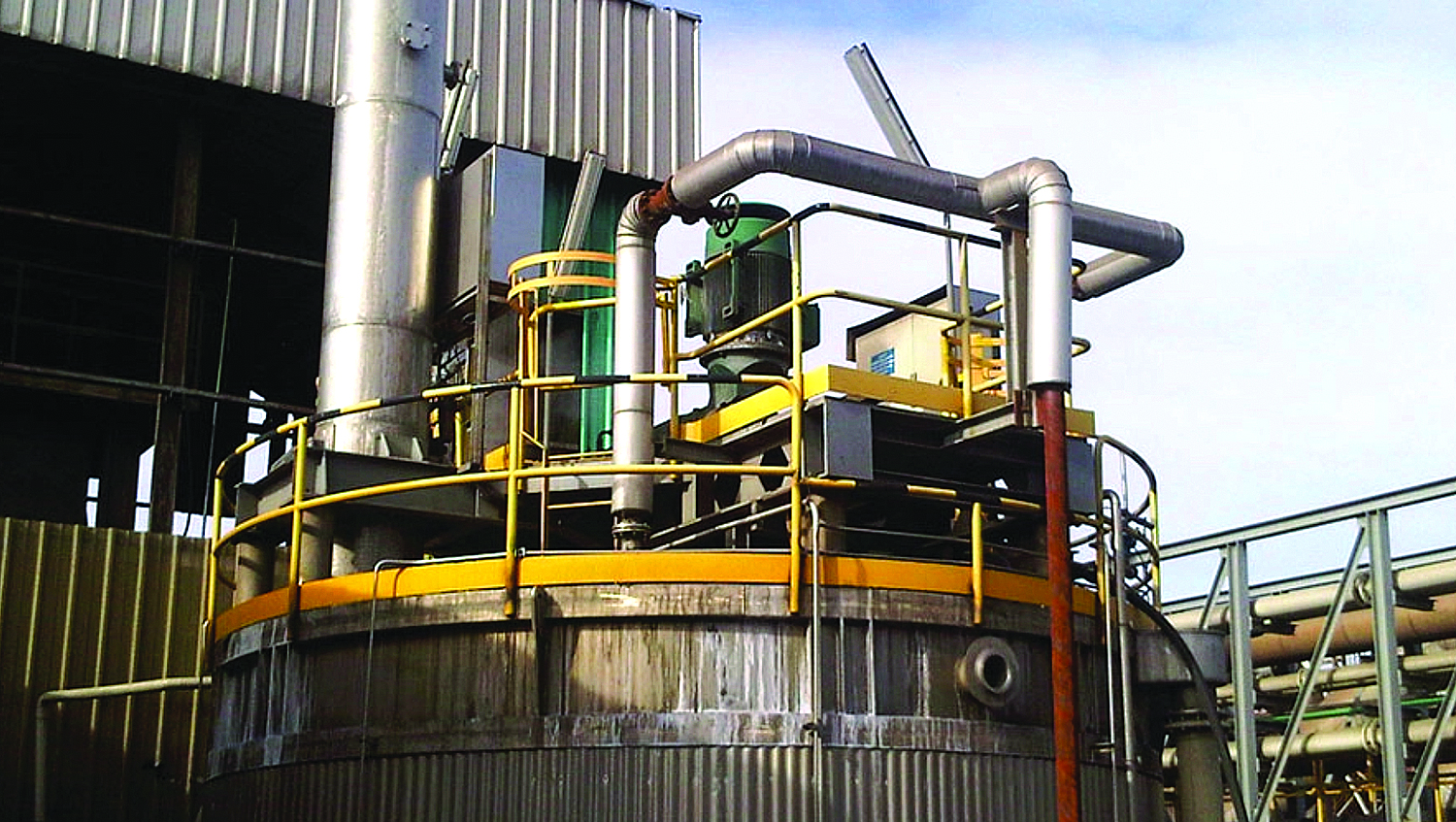
Hudbay’s Copper World project will eventually be expanded to include a copper concentrate leach facility employing Albion Process leach reactors, an example of which is shown here.
Hudbay Minerals recently announced the results of an enhanced pre-feasibility study for Phase I of its 100%-owned Copper World project near Tucson, Arizona, USA. The study “significantly enhances the economics and de-risks the project through higher levels of engineering, a simplified project design, lower upfront capex and a longer mine life,” said Peter Kukielski, Hudbay’s president and CEO.
Copper World is planned as an open-pit shovel and truck operation with a conventional flotation concentrator producing copper concentrate and molybdenum concentrate, with an expansion of the processing facility to include a copper concentrate leach facility producing copper cathode and silver/gold doré.
The concentrator during Phase I will have an installed capacity of 60,000 tons per day with conventional crushing, grinding, flotation, molybdenum separation, concentrate dewatering and tailings thickening. For the first four years, the final product will be a copper concentrate sold to market. The processing plant is expected to be expanded by year five with the construction of a concentrate leach facility in year four.
The concentrate leach facility will also include sulphur flotation, an acid plant, an SX/EW plant and a Merrill Crowe circuit for precious metals. The leach facility will also produce sulphur which will be processed into sulphuric acid at the acid plant. When sulphur production from the concentrate leach process is insufficient to fill the acid plant capacity, sulphur will be purchased at local market price. When acid production exceeds the concentrate leach requirements, the excess will be sold.
As part of the PFS, detailed test work was completed on various concentrate leach technologies, including Glencore Technology’s Albion Process as well as low- and high-temperature pressure oxidation. The tests, according to the company, indicate Albion and high-temperature pressure oxidation yield the highest copper extraction rates in the range of 97% to 99% for all samples. However, the Albion Process was selected as the preferred concentrate leach technology because it is simpler to operate, is modular, offers flexibility to scale the plant and has significantly lower acid neutralization requirements when compared to high temperature pressure oxidation, according to Hudbay.
In the Albion Process, finely ground copper concentrates in slurry form are leached in agitated vessels, and oxygen is introduced to the leach slurry to oxidize the sulphide minerals. The vessels, called leach reactors, are agitated using dual hydrofoil impellers and oxygen is introduced to the leach slurry at supersonic velocity to improve mass transfer efficiency and ensure efficient oxidation of the sulphides. The reactors are designed to operate near to the boiling point of the slurry, and excess heat generated from the oxidation process is removed through humidification of the vessel off gases.
The Copper World concentrate leach facility is sized at 70,000 metric tons (mt) of copper cathode during Phase I – half of its ultimate 140,000-mt design capacity. The PFS noted an opportunity to process third-party feed during the last two years of the mine life to maximize the utilization of the SX/EW facility. According to Hudbay, given the modular nature of the Albion technology, there also remains the opportunity to increase the scale of the concentrate leach facility up to the maximum design capacity, which will allow for the processing of additional internal concentrates or third-party feed.
Total initial capital costs are estimated to be $1.3 billion for Phase I, including all costs associated with the construction of the concentrator and associated infrastructure. Construction of the concentrate leach facility is estimated to cost $367 million and includes the cost for the SX/EW plant, acid plant, sulfur burner and precious metals plant.






